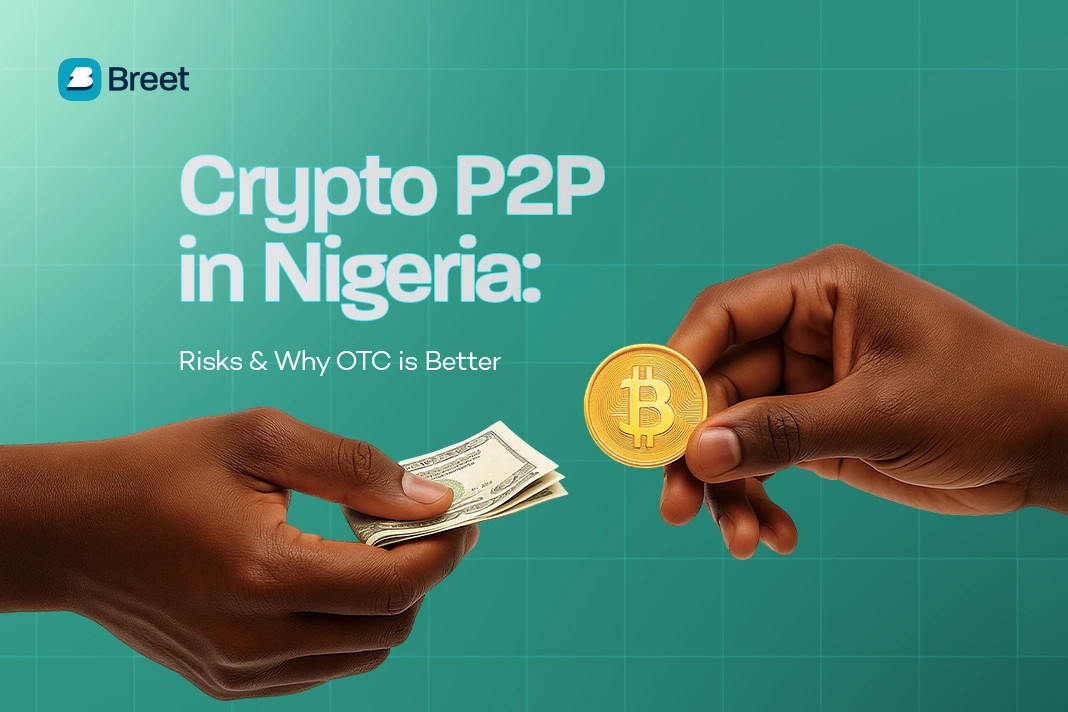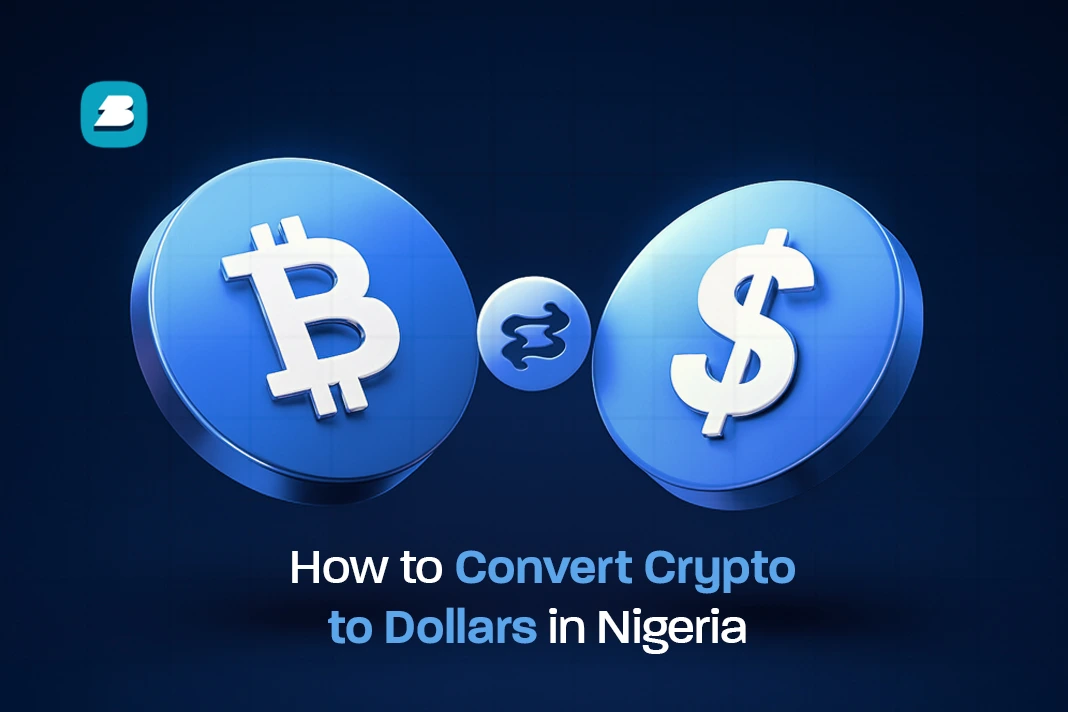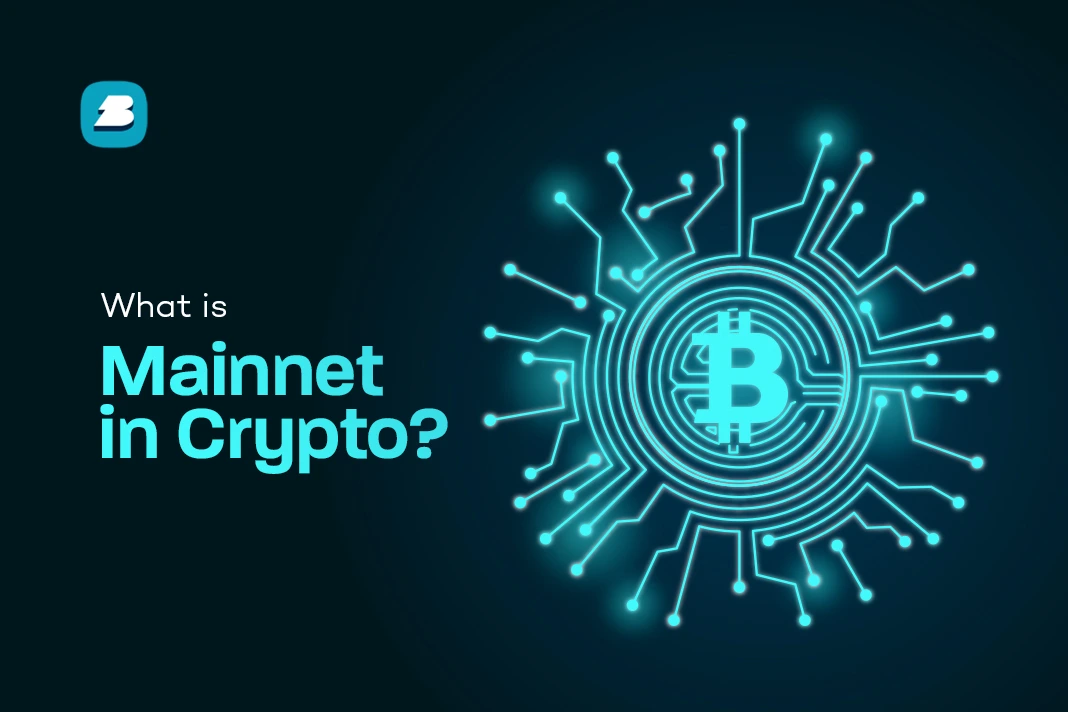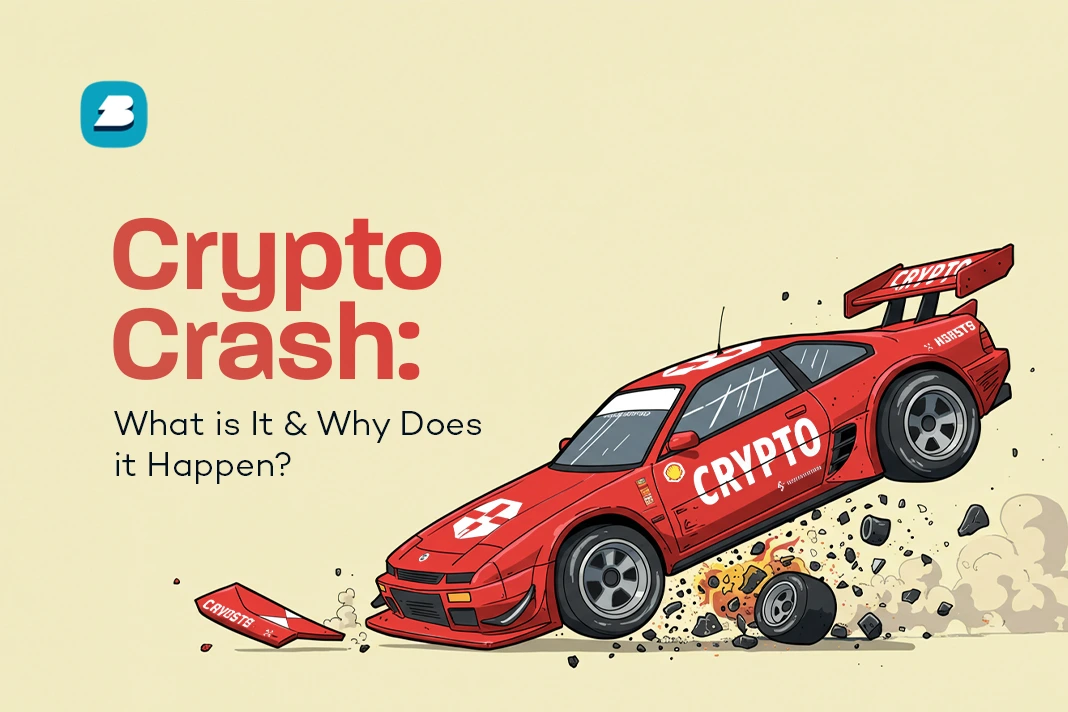If you have been in the crypto space long enough, you have experienced several crypto bubbles. This phenomenon is when prices of cryptocurrencies like Bitcoin rise too quickly usually because of a lot of excitement or hype.
This increase in price is not driven by the token’s intrinsic value or real-world adoption. Instead, it solely feeds off speculation, media hype, and the fear of missing out (FOMO).
This guide explores how this phenomenon, the crypto bubble, can affect your investments and how to steer clear. Stick around.
Related:
- Top 11 ways to Recover Lost or Stolen Bitcoin From Scammers
How a Crypto Bubble Forms and Bursts
Crypto bubbles follow a very predictable cycle that can broken down into five phases:
1. Displacement
Here, a new, exciting tech comes up (maybe smart contracts, DeFi, or the Metaverse). This new “big thing” gets the eyes of early investors. They quietly start buying while prices are still very low, marking the start of what we’ll call the investor imagination phase.
2. Boom (Thrill)
Prices begin to rise. The social media buzz attracts more investors, creating a positive feedback loop. More and more people rush to buy, pushing demand much higher than supply. This causes the price to go up while the fun builds. It is the investor excitement phase.
3. Euphoria (Mania)
This is the bubble’s peak. Prices increase by several folds without falling. Everyone abandons caution because they want to be millionaires overnight. This is also the time when you see analysts popping up wild theories to justify the extremely high prices. They build on the belief that even if you buy at a crazily high price, you can still sell later to someone even more optimistic (the “greater fool”).
4. Profit-Taking (Anxiety)
Of course, this belief only causes anxiety. So the smart and early investors begin to sell their assets to make a profit. Usually, this is where the price increase slows or dips slightly. If you are late to the crypto party, you would start calculating your losses from here. A popular example is the NFT bubble that started in 2023. The hype and prices started to stall. Those who bought during the mania phase had the value of their NFT dip.
5. Panic (Bust)
A piece of bad news or a noticeable price drop triggers the burst. The dip, even if it’s just a few hundred dollars, causes a crazy wave of panic. Everyone rushes to sell before the price drops further. With this, the market crashes and the bubble bursts.
Top Pick:
- USDT TRC20 Contract Address: What is it & How to Get it?
Historical Examples of Crypto Bubbles & Their Burst

Here are real-world examples of Crypto Bubbles and what exactly happened during these bubbles.
1. The 2017 ICO Boom
The 2017 ICO boom happened with the rise of Ethereum. The Initial Coin Offering (ICO) craze made billions for a lot of new projects, usually with just a whitepaper and a really unclear promise. Even Bitcoin was affected; its price hit the then all-time high of $20,000.
The bubble burst came in 2018, leaving most ICO tokens worthless.
2. The 2021 NFT Craze
We all remember the NFT madness of 2021. The CryptoPunks. The Bored Ape Yacht Club. Even the now worthless MekaVerse cartoon robot. Some digital images sold for tens of millions of dollars.
The pump happened because a lot of celebrities hyped these NFTs. Eventually trading volumes and prices for most collections crashed by over 90%. Even Logan Paul’s Bumble Bee NFT dropped from $1 million to just $15.
3. Meme Coin Surges (e.g., 2021)
Do you know that Dogecoin and Shiba Inu were created as jokes? Even when they had little to no use, they had several crazy bubbles. Their prices were moved entirely by social media trends and some celebs. Some of them retained their prices while others fell super fast.
4. 2022 Terra (LUNA) and UST Collapse
The Terra system was a massive financial bubble back in 2022. It all started with the promise of a risk-free 20% yearly return on its stablecoin, TerraUSD (UST).
Of course, it got everyone buying UST and its token, LUNA, skyrocketed to over $119 in value. Overnight, the whole system went from zero to over $40 billion.
However, the structure failed fast. When too many people suddenly took their money out, UST dropped to $1.00. Then the “death spiral” happened: the system tried to fix the problem by printing more LUNA tokens.
The crypto bubble burst when the token price crashed to nothing in just one week, and UST became nearly worthless.
5. The Bitconnect Ponzi Scheme (2017-2018)
Bitconnect ran a “lending program” and told people they would earn up to 40% every month. Apparently they lied about having a secret trading computer. The BCC coin reached a peak value of over $3.4 billion because it was a Ponzi scheme.
They just used cash from new investors to pay the older ones.
This Crypto bubble burst when regulators in the U.S. took legal action against them.
Knowing they couldn’t continue the fraud, Bitconnect suddenly shut down its lending business in January 2018. The BCC token’s value dropped to zero, causing investors to lose nearly $2.4 billion.
You Might Like:
Signs You Might Be in a Crypto Bubble
Now recognizing particular warning signs can help you avoid poor financial decisions:
- Unrealistic Price Predictions: You see viral posts on social media that a coin “surely” hit 100x or will never go down.
- FOMO (Fear of Missing Out): You feel an anxious urge to buy because you see others making money and you don’t want to be left behind. Trust me, do not invest.
- Media Saturation: News about crypto prices is on the front page of the news, and your friends or family who know nothing about tech are suddenly advising you to buy or asking you how to buy.
- Hype-Driven Coins Dominate: The coins making the biggest gains are meme coins or projects with no clear purpose. The real projects with strong tech get abandoned.
- Lack of Real Utility: When you research the project, you can’t find clear answers to questions like “What problem does this solve?” or “Who uses this?” The only thing talked about is the price.
Recommended:
How to Protect Yourself from Crypto Bubble Losses

While crypto investing is really risky, you can manage that risk with a few smart moves:
- Do Your Own Research: Don’t invest in something you don’t understand. Read the project’s whitepaper. Who is the team? What is the token’s purpose? Does it have a working product?
- Invest Only What You Can Afford to Lose: This is the most important advice. Treat crypto as a high-risk gamble, not a safe savings account. Don’t place your emergency fund or money you need for rent or tuition.
- Diversify: Don’t put all your money into one coin. Try diversifying to spread out your risk.
- Focus on Long-Term Value: Instead of chasing pump and dumps, go for established projects with a long-term vision. You could try Bitcoin or Ethereum.
- Avoid Hype Coins: If a coin’s only selling point is its community or a celebrity, it is a real death-trap for your money.
- Use Trusted Platforms: Stick to well-regulated exchanges to buy and sell. Many smaller, unknown exchanges can be scams or have poor security.
Don’t Miss:
- How to Convert Crypto to Dollars Easily in Nigeria
Conclusion on Crypto Bubbles
The crypto market is exciting but really prone to bubbles that have no real value. Protecting yourself means recognizing warning signs like fake price predictions and celebrity crypto ads.
Your best defense is to always do your own research, diversify your portfolio, and invest only what you can afford to lose. Focus on projects with real use and a vision. Most importantly, invest wisely.
Frequently Asked Questions (FAQs) on Crypto Bubbles
How can I tell if the Market is in a Bubble right now?
You’re likely in a bubble phase when several red flags start popping up. Prices rise fast, with coins doubling or tripling in value without any major news to justify it. Also, the media only talks about crypto, and your friends or family who know nothing about tech are suddenly talking about it. At the same time, fear of missing out (FOMO) takes over, making you feel pressured to buy because everyone seems to be getting rich overnight.
Can I accurately predict when a Crypto Bubble will Burst?
No, you cannot predict the exact time or day a bubble will burst. While bubbles follow a predictable cycle, the trigger for the final crash is usually an unexpected event. It could be a sudden change in government regulation, a major exchange failure, or even a big investor deciding to sell a large amount of assets. You can only prepare for the crash, not time it.
How often do these Massive Crypto Bubbles occur?
Major bubbles often occur every few years, usually tagged to Bitcoin’s halving cycle. However, smaller bubbles can form and burst much more frequently around assets like certain new tokens or sectors. These usually have short-term hype.
The Best way to Protect my Investment from a Bubble Crash?
The most important rule is to invest only what you can afford to lose. Don’t go all out with your savings or rent, especially when you’re not so sure about the coin. Beyond that, the best protection is diversification and taking profits instead of waiting for the big peak.
What is the difference between Normal Market Growth and a Bubble?
The main difference is what drives the price. Normal market growth happens slowly and steadily, based on a project’s real utility and real tech (like a network getting faster or signing a new partnership). A bubble, however, is driven only by hype, speculation, and the expectation that someone else will buy the coin for a higher price later.








